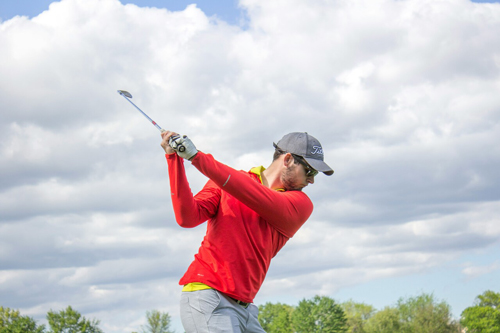People don’t often think of golf as a particularly physically demanding sport, especially when compared to the likes of football or tennis. However, sore muscles or even injuries are not uncommon in this sport, especially in your back, arms and shoulders.
When you think about it, golf requires you to use a unique set of muscles repetitively, including complex movements that are not part of our daily lives. So, if you’re a beginner experiencing the effects post-game, here’s how to help your muscles recover quicker.
Advanced heat and massage wearables
One of the most effective methods to release muscle soreness is through heat and massage therapy. Today, we have access to a variety of advanced tools that can be used at home, with Venom wearables leading the industry. This innovative technology combines two recovery methods: targeted heat to improve blood circulation and vibration therapy to loosen tight muscles, offering a soothing and immediate relief.
You may either go for something like Venom Go, which is an easily portable pad that can be used on various parts of the body, or a Venom 2 for a targeted muscle group, like shoulder or back (the most affected muscles for golfers). A device like this is certainly an investment, but it can be irreplaceable if you’re serious about the sport and plan on playing back-to-back games.

Foundational post-round stretches
Stretches are an absolute must-do in all sports, including prior and after the game. A warm-up routine beforehand can help prevent injuries, while stretching afterwards acts as a release for sore muscles. It helps lengthen the tight muscles and get rid of the tension built up over many hours of playing.
Now, this can be a full yoga routine, if that’s your cup of tea, or as simple as doing 15 minutes of gentle stretching, such as torso twists, shoulder and chest stretches (using the doorway is a good tip), as well as glutes and lower back. Make sure to hold each position for at least 30 seconds to allow for a deeper stretch, without bouncing or moving too much.
Active recovery and healthy lifestyle
If you feel stiff and sore after the day of golfing, don’t just sit on the couch. Active recovery is a method that top athletes swear by. This means doing any kind of low-intensity movement, such as a light walk, a swimming session, a ride on the bike, and so on. These activities may work a whole different group of muscles, but they encourage circulation in the whole body, helping reduce stiffness quicker.
Moreover, your lifestyle choices will also impact your overall wellbeing. For instance, during your course, make sure you drink enough fluids and electrolytes, especially on hot and sunny days. What you eat afterwards is also key - enough protein is essential to repair damaged muscle tissue while carbs will help restore your energy levels.
Finally, never underestimate the power of a good night’s sleep. Prioritise at least 7 to 9 hours of quality sleep (ideally always, but especially after a golfing session). Deep sleep is when your body can repair and, if your recovery strategy was effective, you may wake up feeling brand new the next day!
Recovery as part of the sport
Like any other sport, recovery strategies in golf are non-negotiable. It’s not just there to make you feel better - they can help improve your performance, allowing you to play more consistently and avoiding unnecessary injuries.

